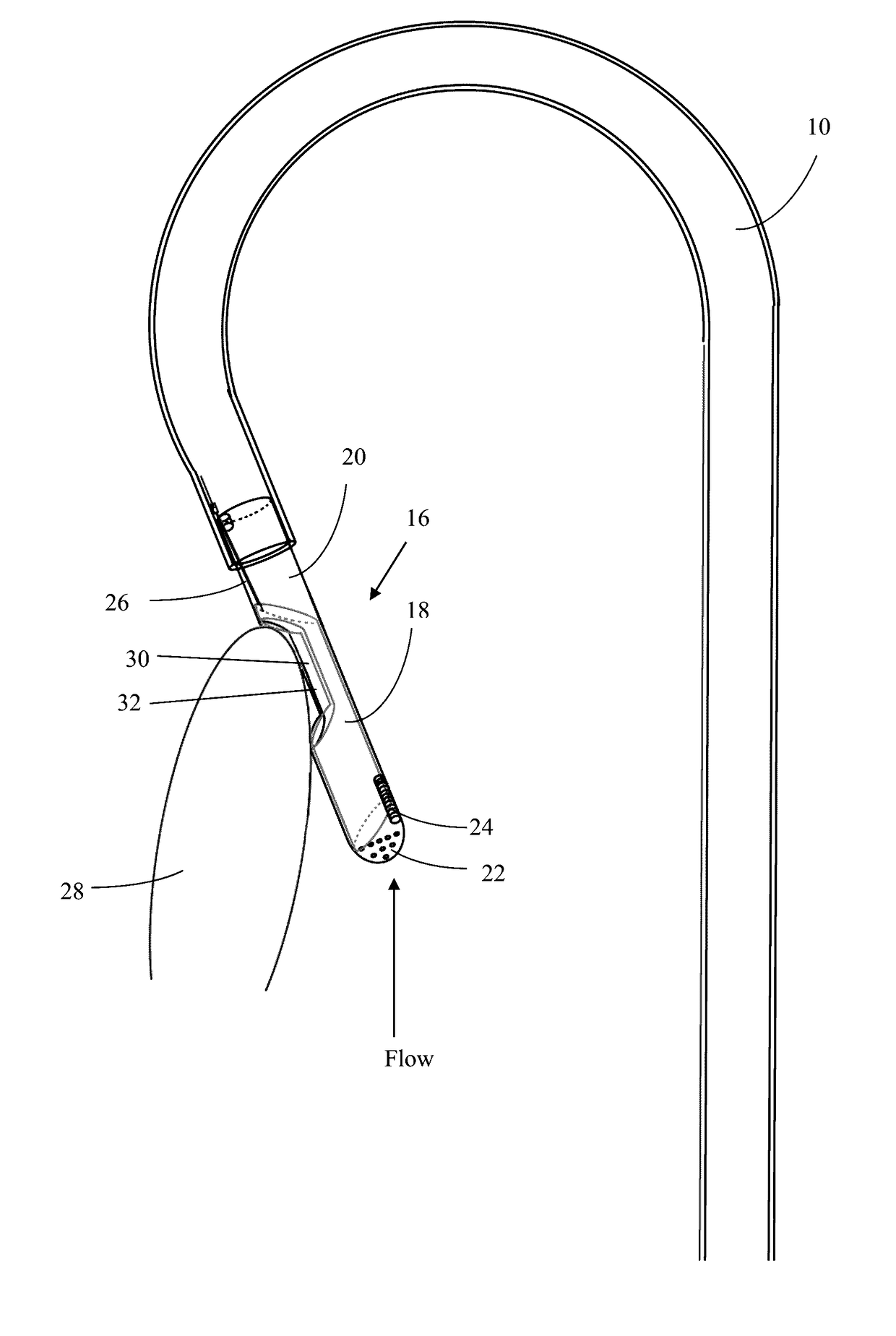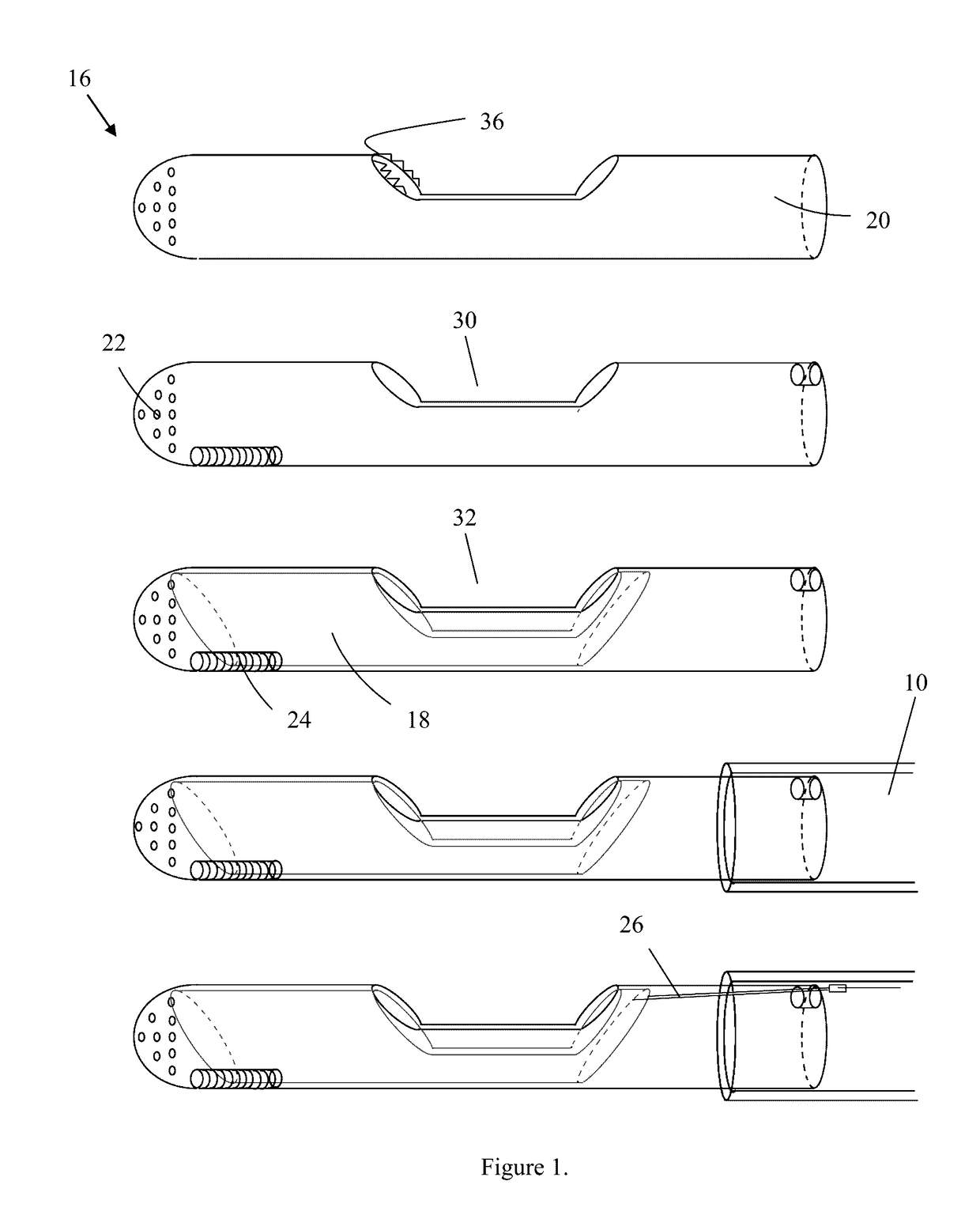Device for the treatment of hypertrophic cardiomyopathy
a cardiomyopathy and hypertrophic technology, applied in the field of hypertrophic cardiomyopathy, can solve the problems of increased pressure in the left ventricle, increased obstruction of the ventricle, so as to reduce the risk of fully sedating the patient, prevent unwanted movement of the tubular blade, and facilitate the effect of performing
- Summary
- Abstract
- Description
- Claims
- Application Information
AI Technical Summary
Benefits of technology
Problems solved by technology
Method used
Image
Examples
example 1
Performing a Myectomy Using the Device
[0030]The femoral or brachial artery is punctured, providing access to the aorta (blood vessel). The sheath is inserted for secure hemostasis and a guide wire is advanced into the left ventricle via trans-aortic route. The device is then filled with normal saline to prevent an air embolism, and the device is then threaded via a hole at the distal end and advanced up to the left ventricle. The cutting tip 16 is positioned adjacent to the myocardium 28 that is to be excised, as seen in FIG. 2, under the guidance of transesophageal, transthoracic, or intracardiac echocardiography, and / or fluoroscopic guidance, then the guide wire is removed. After confirming the position of the cutting tip 16, the operator slides the tubular blade 18 within the outer shell 20 covering to resect the septum. The tubular blade 18 action will be controlled via the proximal end which is outside the patient's body. During this procedure, the tubular blade 18 is in the cl...
example 2
Using the Device to Excise Tissue or Plaques
[0035]The device is also useful in removal of tissues in organs, such as where tissue needs to be removed from an organ, tumor removal, and circulatory plaque and thrombosis removal, such as deep vein thrombosis clot removal. In such instances, the device is advanced to the excision site, as described above. Once the cutting tip is adjacent to the target tissue or clot the blade is used to cut the target tissue or clot. The excised tissue is then removed from the patient via the catheter using negative pressure.
example 3
Proximal Insertion and Implementation of the Device
[0036]Under more severe conditions, the device may also be inserted more closely to the organ of targeted implementation and not threaded through distal vessels. For instance, in HCM patients who are severely obstructed, the device may be inserted between the ribs in a location near the heart (mini thoracotomy), in a manner that punctures the heart cavity. In such insertion techniques, the tubular construct connecting the device to the suction apparatus may be comprised of non-flexible polyethylene or other solid plastic material. This embodiment may also utilize a proportionally larger device fabricated in the same manner as above. Once positioned adjacent to the target tissue, the method of utilizing the device may be performed by a surgeon's hand or by a robotic device.
PUM
 Login to View More
Login to View More Abstract
Description
Claims
Application Information
 Login to View More
Login to View More - R&D
- Intellectual Property
- Life Sciences
- Materials
- Tech Scout
- Unparalleled Data Quality
- Higher Quality Content
- 60% Fewer Hallucinations
Browse by: Latest US Patents, China's latest patents, Technical Efficacy Thesaurus, Application Domain, Technology Topic, Popular Technical Reports.
© 2025 PatSnap. All rights reserved.Legal|Privacy policy|Modern Slavery Act Transparency Statement|Sitemap|About US| Contact US: help@patsnap.com



